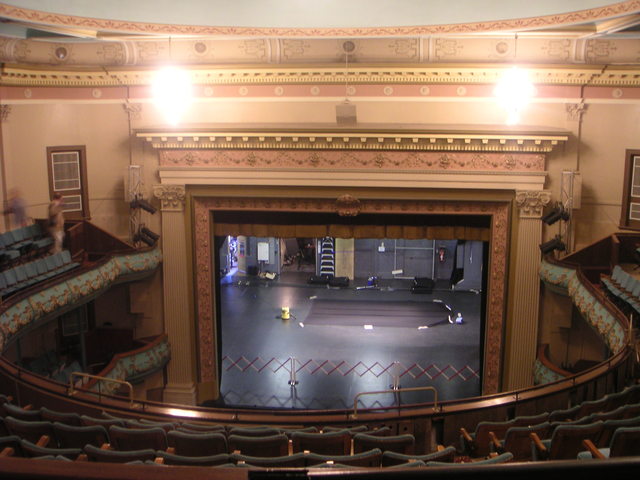Raked Stage of Her Majesty’s
Her Majesty’s Theatre – Ballarat
The ‘Academy of Music’ in Ballarat was remodeled and re-opened as Her Majesty’s Theatre in 1899 and a raked floor was introduced. (ref Cinema Treasures)
When Alexandra Moore, a Ballarat ballerina, performed in an Australian Ballet Regional Tour earlier this year, she commented that the sloped stage at Her Majesty’s:
“means when you dance you have to put your weight in a different place. If you stand too far forward you could start to fall: it’s like dancing on a hill.”
The raked stage was of great assistance when the Ballarat Light Opera Company performed their production of Singing in the Rain – with real water. The slope guaranteed that the water flowed into guttering that was installed along the downstage lip of the stage.
History of Raked Stages
Raked stages have been around since the English theatres of the Middle Ages. The stages were designed to slope upwards away from the audience to improve the view and sound for the audience.
Rakes of 1 in 18 (5.56%) to 1 in 48 (2.08%) were more common.
Her Majesty’s Theatre in Ballarat has a rake angle of approximately 1 in 25 (3 degrees).
In contrast, theatres constructed after the beginning of the 20th century generally feature a flat stage and a raked audience section. This was the method used in Greek and Roman theatres to eliminate difficulties of moving across a sloped surface.
Upstaging
On a raked stage, performers who are further from the audience (towards the back of the stage) are higher than those towards the front. This resulted in the theatre terminology:
- upstage – further from the audience
- downstage – closer to the audience
- upstaging – a performer moving to a more elevated position on the rake (stage), causing the upstaged actor to turn their back from the audience to address the cast member. This term now has a figurative meaning of an actor drawing the audience’s attention away from another actor.




